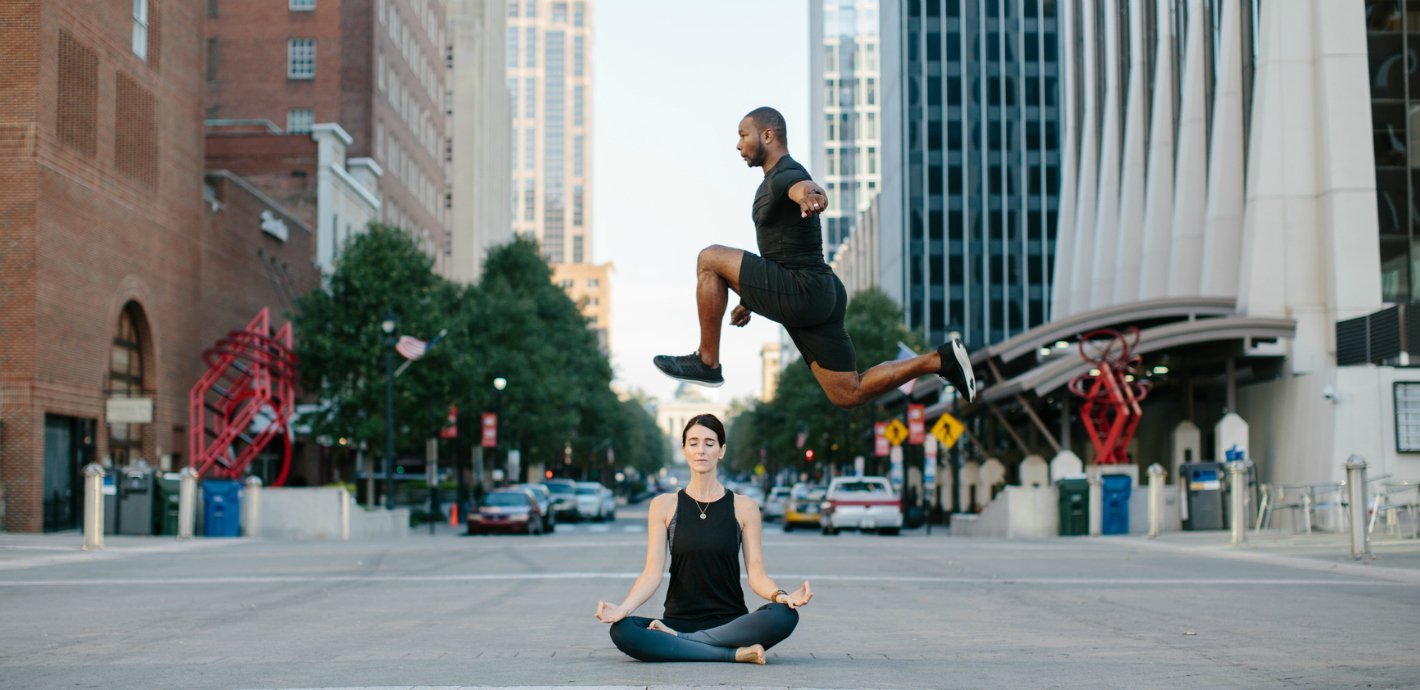I was recently invited to speak on a panel about mindfulness. Joining me was a Vedic practitioner, a well-established yoga teacher, and a shamanic meditation guide. Funny enough, I was the only person on the panel who actually practices mindfulness meditation daily.
“What does mindfulness mean to you?” was the first question. As the microphone went around, each individual very humbly explained their personal practice and how it’s not primarily mindfulness. Then they offered approximately the same traditional definition of that word. When it was my turn, I did feel compelled to point out that mindfulness and meditation, while intimately related, are not the same and both do, in fact, have proper definitions.
What is Mindfulness?
The great Tibetan Buddhist teacher Chögyam Trungpa Rinpoche had an amazing ability to work with the English language, and would often come up with new words to articulate the meaning of another, more established term. For example, he coined the word “nowness”—as in the essence of being now in the present. That is one clear way to think of the term “mindfulness.” The “ness” aspect is “the essence of,” so we are saying that mindfulness is the essence of bringing your mind fully to one thing that is happening in the present moment.
The other day, someone on the social media team for MNDFL, the network of meditation studios that I co-founded, pinged me, asking if I could relate to a question posted on our Instagram feed. Apparently, she had posted a beautiful image of someone knitting and noted that while knitting is awesome, it is not meditation. A commenter had asked a good question: “Who’s to say knitting is not a form of mindful meditation just as walking can be a form of meditation?” I really do love this question because it allowed me to geek out and clarify what mindful meditation is from a traditional point of view.
At the risk of being highly controversial amongst the mindful knitting community (which, I’m guessing, does exist), one could mindfully knit or eat, but it is not a formal meditation technique, compared to those that have been transmitted over the centuries. Walking meditation is one of the four postures the Buddha discussed as a way to build mindfulness in his discourse on the four foundations of mindfulness some 2600 years ago. These postures fall under Mindfulness of the Body, which is under Right Mindfulness, which is part of the Eightfold Path. The other three, incidentally, are sitting, lying down and standing.
Now, here’s the thing about mindfulness: The more you train in meditation, the more you are able to show up fully for the rest of your life, including things like knitting. But as mindfulness and meditation both become very popular, it’s important to distinguish what is and isn’t meditation. So while you can mindfully knit (i.e., bring your mind fully to that one thing that is happening in the present moment), it is not a formal meditation practice. It is applying mindfulness, which can be cultivated in formal meditation practices to other aspects of your life, which is a lovely thing to do.
What is Meditation?
Meditation is a revolutionary practice for transforming your life by becoming familiar with, and ultimately, befriending all aspects of who you are. Running MNDFL, I encounter people every single day who have been led to believe that meditation is just one thing, and that one thing is whatever technique they were exposed to first. There are thousands of meditation techniques out there, but I will speak to some of those that are time-tested, having been around for hundreds, if not thousands, of years.
One form of meditation is bringing your mind fully to the breath, whether that is relaxing with your existent breath as is taught in Buddhist traditions, or more controlled breathing, like what is sometimes found in Kundalini lineages. In the Buddhist tradition, this is known as mindfulness meditation because we are relaxing with and tuning into what is currently going on: The body breathing. The more you train in mindfulness meditation, the more you are able to be present in the rest of your life.
This is different than, say, Vedic or Transcendental Meditation, where you work with a mantra. These mantras are personal to you, having been offered by a trained teacher. The transcending aspect is actually repeating the mantra until it falls away—meaning you transcend it and relax into how things are. As a Buddhist, I admit I am not the best person to address this practice and highly encourage you to seek out certified Vedic or TM teachers who can do this profound practice justice, but as you can likely already tell this is different than mindfulness of the breath.
Related: What Is Transcendental Meditation?
There are also contemplative practices, where you bring to mind a phrase or a question and create some mental space for wisdom to arise around it. Some might say you are listening to your gut or intuition in these practices, but really it’s a sense of getting out of your own way so that you can realize an experiential understanding of whatever you are contemplating, whether it’s the truth of your mortality or setting an intention for your day.
The last overarching style I’ll share is visualization. Coming from the Tibetan Buddhist tradition, there are all sorts of visualizations one might bring to mind and allow as the object of meditation. These images are often representing your innate wakefulness. In a more public practice, such as that of loving-kindness, you may even bring to mind the image of someone you admire, the image of someone you don’t know very well, or the image of someone you have a hard time with in order to fully open your heart to them and wish them happiness and freedom from suffering.
The above list of types of meditation is by no means exhaustive, but provide some guidelines for two points I’d like to offer:
1. If you are receiving a meditation technique that is not time-tested and from a long-standing tradition, you may find that it is very different than these, and I don’t necessarily recommend doing it.
2. Mindfulness meditation—often considered the practice of being mindful of the breath—is but one of many, many forms of meditation that are out there. I recommend that you try a number of forms of meditation and see if mindfulness is for you.
Sitting on the panel the other week, I could embrace and appreciate that all of these individuals were meditation practitioners and lovers of meditation, but they were not primarily mindfulness practitioners. That said, all of us have the opportunity to train in mindfulness meditation, stemming from the Buddhist tradition, and bring mindfulness into our knitting, eating, listening, and more. It’s a powerful tool for everyday life that we all have access to as we all have one of the very basic meditation tools needed for it: The breath.








Comments (0)